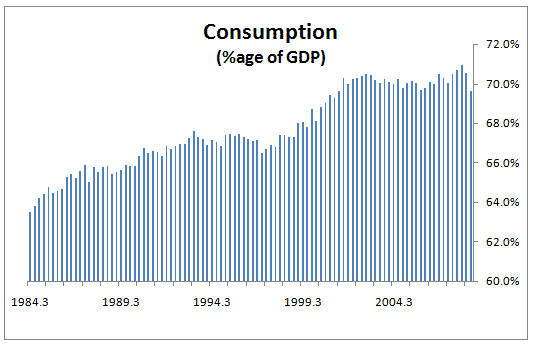GDP: imports, inflation and local government are the story
I have been out the entire morning and haven’t been able to read any news reports on the GDP numbers. However, I have just now had a chance to look at the data and wanted to share my thoughts with you, unfiltered by the media reports. I would sum it up by calling it a story about the three I’s of imports, inflation and investment. But, I will also have a few words to say about state and local government spending as well.
We all expected a bad number. Therefore, in the scheme of things, -3.8% was not so bad, despite being billed as the worst economic performance in 27 years. There were no big surprises, so I want to focus on the deltas — that is on the things that changed the most from Q3 to Q4. This may give us a clue as to what to expect going forward.
Now, I am going to be discussing the non-inflation-adjusted numbers because I do not want the GDP deflator – which is used to go from these numbers to the ones you hear in the media – to skew the analysis.
Here are the deltas I see:
Inflation
The first number to note is the GDP deflator itself. Now in case you don’t know what the hell a GP deflator is – it is the number the government statisticians use by which they ‘deflate’ the Nominal GDP number in order to calculate the Real GDP number reported in the press. (For more on this, see my post “The GDP deflator.”)
This number often seems bogus as it does not include an adjustment for imported goods and services like oil. So it’s like measuring domestically-derived inflation only. It gives a good read on prices generated in the domestic economy. The annualized quarterly number for Q4 2008 was -0.07%, the first negative number since Q3 1954, which was 54 years earlier. Translation: deflation has arrived. We are not talking about oil prices here. We are looking at deflation of prices for domestically generated goods and services.
Durable Goods
Now, if you recall from Econ 101, GDP equals C + I + G + (Ex – IM) — Consumption + Investment + Government Spending + Net Exports. When people talk about over-consumption, they mean that the C has been growing faster than everything else. For instance, in 1984, 25 years ago, Consumption was 63% of nominal GDP. Just before GDP growth turned negative last year, it was 71%. That’s overconsumption!
But, this has come to an end. And it is durable gods – cars, refrigerators, and the like – that have seen the lion’s share of the fall, an annualized 12.8% last quarter alone. People are obviously deferring purchases of big-ticket items due to economic uncertainty. Expect this trend to last for all of 2009 at a minimum. This is one reason the automakers’ problems are not temporary. I anticipate they will come looking for more money from the government sometime soon.
Fixed Investment
Then there’s the Investment side of things. Fixed Investment as fallen for 8 quarters now, since the beginning of 2007. However, the drop of 7.4% last quarter indicates that the falloff is increasing. But, as capital spending is a lagging indicator, this doesn’t really say much about where things are headed except with regard to the employment market where it signifies an increase in job cuts. (See my post “The Economy’s Four Horsemen” for more on this).
State and Local Government
This is an eye-opener. Government spending is down from Q3 to Q4 because municipalities are having to cut back more than the feds have increased. Basically, your local county or city government doesn’t have a printing press to cover deficit spending with. That means that when tax revenue decreases, so too must spending. And this is exactly what s happening at the state and local level. In fact, the annualized drop in state and local government spending was 7.8% in Q4. That’s huge. Economic stimulus at the federal level will be offset by contraction in local government spending unless local governments receive funds soon. Translation: Obama’s stimulus package is not going to do the trick.
Trade
Finally, we come to net exports. Exports were down an annualized 36% in Q4. But, imports declined even more: an annualized 46%. So net, net we saw a better trade balance in Q4. What this means is that the recession is reducing American reliance on foreign goods and services. I see this as a necessary re-balancing which will be useful once the U.S. leaves recession.
On the whole, my takeaways from this are the following:
- Overconsumption in the U.S. is at an end. Consumers are spending less.
- Durable goods are going to take the biggest beating here. Position your investments accordingly.
- Losses in tax revenue by local and state governments mean reduction in spending, which will partially offset the Obama stimulus package. This makes it likely that the stimulus will fail.
- The absolute value of trade is plummeting. This will cause exporters to lobby for export subsidies, increasing trade friction and protectionism.
Source
National Income and Product Accounts Table – Table 1.1.5. Gross Domestic Product – U.S. Bureau of Economic Analysis

Comments are closed.